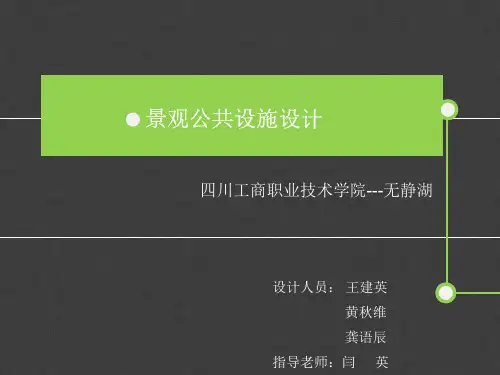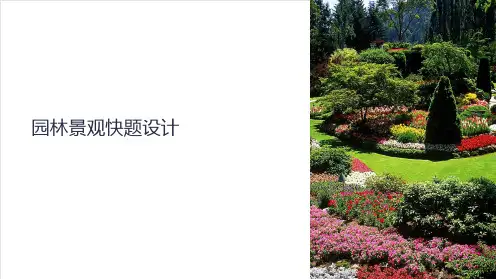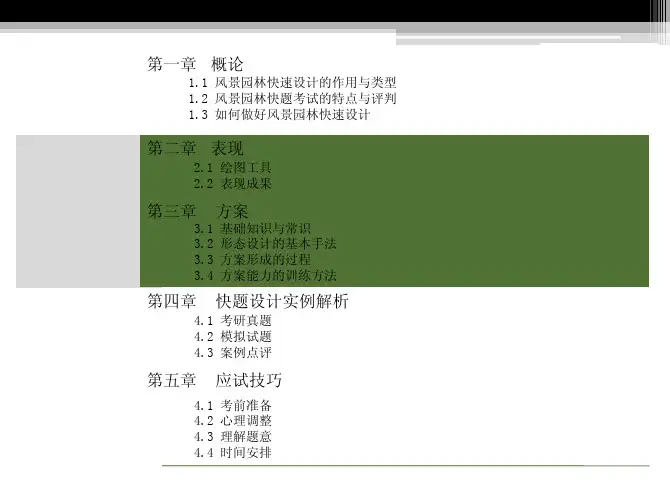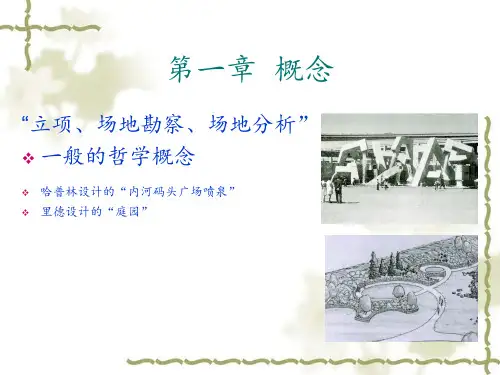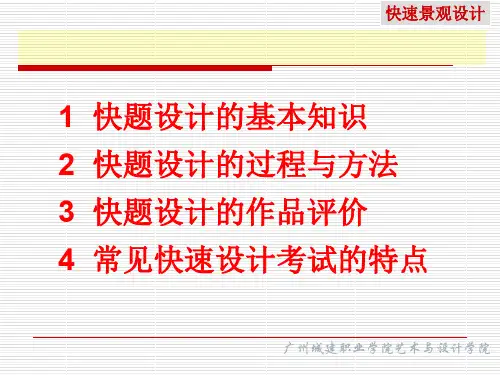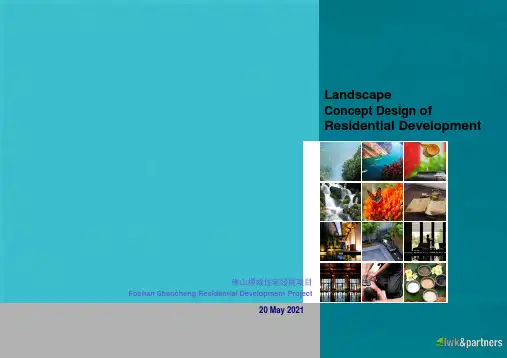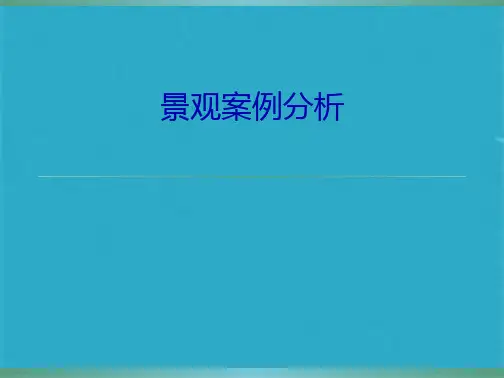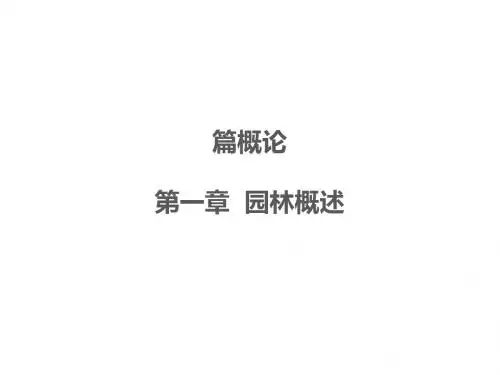2.13 图纸类
工程纸,打印纸,硫酸纸,水彩纸(水粉纸)
2.14 其它类
橡皮,胶带
智慧源于勤奋 伟大出自平凡
2.2 表现成果 2.21 总平面图
dan kiley的设计方案草图、方案平面、剖面和透视
智慧源于勤奋 伟大出自平凡
dan kiley
丹・凯利作品通常使用古典地要素,如规则水池,草地,平台,林荫道,绿篱等等。但他地空间却是 现代地,是流动地。他从基地出发,用最恰当地图解将其转化为一个个功能空间,然后用几何地方式 将他们联系起来,着重处理空间的尺度、区别与联系 。 In 1936 Kiley entered the landscape architectural program at Harvard University. Harvard at that time was undergoing a revolutionary curriculum change in the architecture department with the arrival of Walter Gropius and his lieutenants from the Bauhaus in Germany. The landscape department, however, was less driven by an interest in modernism than by the study of estate gardens, the Beaux Arts traditions and faculty advocacies of naturalism versus formalism. Kiley and his classmates Garrett Eckbo and James Rose, while accepting the earlier ideas of the Olmsteds, were extremely interested in the emerging European social, spatial, and artistic interests. The three classmates were involved in a series of confrontations, both in design and theory, in which they attempted to adapt, without the aid of Gropius, the new architectural thinking to landscape design. Though not by nature a writer, Kiley led in the design innovations, leaving the polemics to Rose and Eckbo. Their joint efforts can be read in three articles published in Architectural Record in 1939 and 1940. This interest in the new modernism became the second major element in Kiley's work.
